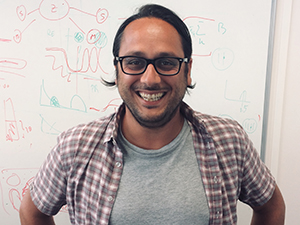New research into how cancer develops has uncovered more detail about the importance of the centromere, a region of human DNA that has a critical role in effective cell division.
Researchers have identified that loss-of-function mutations in a specific protein complex prevent it from protecting centromere DNA. The resulting centromere instability leads to abnormal cell division, which is a characteristic feature of many cancer cells.
These mutations represent a potential target for future cancer treatments, as they make the centromeres in cancerous cells more fragile and sensitive to disturbance. This could allow a carefully targeted drug to destroy these cells without affecting healthy cells where the centromeres remain intact.
The study was led by scientists at The Institute of Cancer Research, London, and funded by Cancer Research UK and the Medical Research Council. The findings were published in the journal Nature Communications.
Overcoming longstanding research challenges
In a dividing cell, the centromere holds together the two identical copies of a chromosome – a DNA fibre containing the genetic information for the cell. It also serves as an attachment point for protein complexes that help manage the alignment and segregation of the two chromosomes during cell division.
It was already known that centromeres can be vulnerable to structural alterations and even chromosomal breakage. However, for a long time, the limitations of DNA sequencing prevented scientists from fully determining how healthy cells overcome this issue.
The high level of repetition in the centromere DNA posed a challenge by making it a very difficult region to map.
Fortunately, recent advances in DNA sequencing allowed the team behind the current study to carry out comprehensive mapping of various proteins in this area to look at the impact of mutations, which led to useful findings.
The researchers identified part of a protein complex – the PBAF chromatin remodelling complex – as having a key role in stabilising the centromere. The subunit in question, called PBRM1, is often mutated in cancer, and the researchers showed that cells lacking this subunit have structural changes in and around the centromere.
Importantly, PBAF is a type of SWI/SNF remodelling complex, and SWI/SNF mutations are present in more than 20 per cent of all cancers.
Next, the researchers looked in detail at some of the proteins that provide chromosomes with structural support. They found that these proteins, called histones, were also affected by PBRM1 loss, potentially contributing to abnormal cell division.
A promising therapeutic target
When centromeres are unable to function correctly and ensure accurate cell division, this can lead to the loss or disruption of genetic information in daughter cells. If these changes involve deleterious defects or allow the cell to continually divide, they can contribute to the development of cancer.
In people who already have cancer, these mutations can contribute to drug resistance during treatment and lead to disease progression as the cancerous cells become more transformed.
Having identified the mechanism by which centromere function is affected, the researchers wanted to see whether it might be possible to exploit this vulnerability using anti-cancer drugs.
They tested an existing type of medication called an MPS1 inhibitor, which affects cell division in cells with perturbations in their centromere structure or function. When they compared the effects of MPS1 inhibition on healthy cells and on cells lacking PBAF, they found that it induced sensitivity in the latter.
“Important implications for the future of cancer treatment”
Dr Karen Lane, joint first author of the study and a Postdoctoral Training Fellow in the Epigenetics and Genome Stability Group at The Institute of Cancer Research (ICR), said:
“We are pleased with the findings of this work, which help us understand PBAF better and add to our knowledge of how this complex helps protect against cancer development.
“This advance has two main facets. Firstly, it identifies a mechanism by which centromere DNA, which is fragile and tightly regulated, is protected in normal cells. Secondly, it reveals a potential therapeutic vulnerability in cancers with mutations in this protein.
“Our work has also generated a lot of publicly available data, including proteomics datasets, RNA-sequencing, mapping PBAF on DNA and pipelines for visualising repetitive sequences such as the centromere. We hope this will help the research community more broadly.”
Joint first author Dr Alison Harrod, also a Postdoctoral Training Fellow in the same ICR research group, said:
“We were surprised to find such a clear shift in the histone environment around the centromere following PBRM1 loss, highlighting the impact it has on centromere stability.
“We plan on following up a few aspects of this project. These include looking at the role of other SWI/SNF complexes in centromere stability and trying to determine how this low level of instability affects cells over time.”
Professor Jessica Downs, Deputy Head of the Division of Cell and Molecular Biology at the ICR, said:
“This study has implications for the future of cancer treatment. Knowing that PBAF loss leads to a sensitivity to centromere perturbation has potential therapeutic value. Given that more than 20 per cent of cancers have mutations in SWI/SNF, this could represent a therapeutic target.
“More importantly, the study uncovered a previously unknown role of the PBAF chromatin remodelling complex, which will allow us to more fully understand the cellular changes present in PBAF-deficient cancer cells.”
.tmb-propic-md.jpg?Culture=en&sfvrsn=c25d2b2f_9)
 .
.
